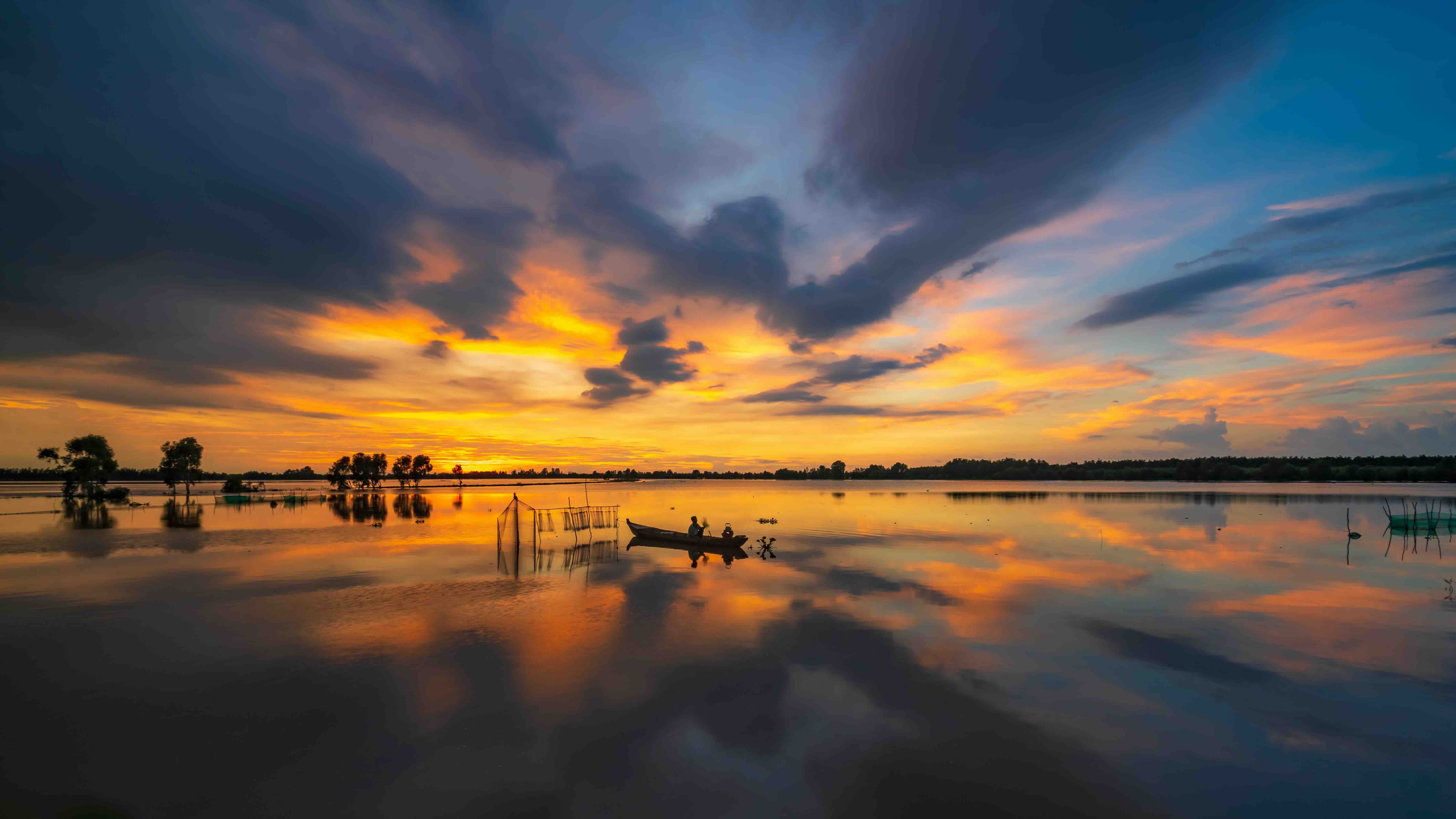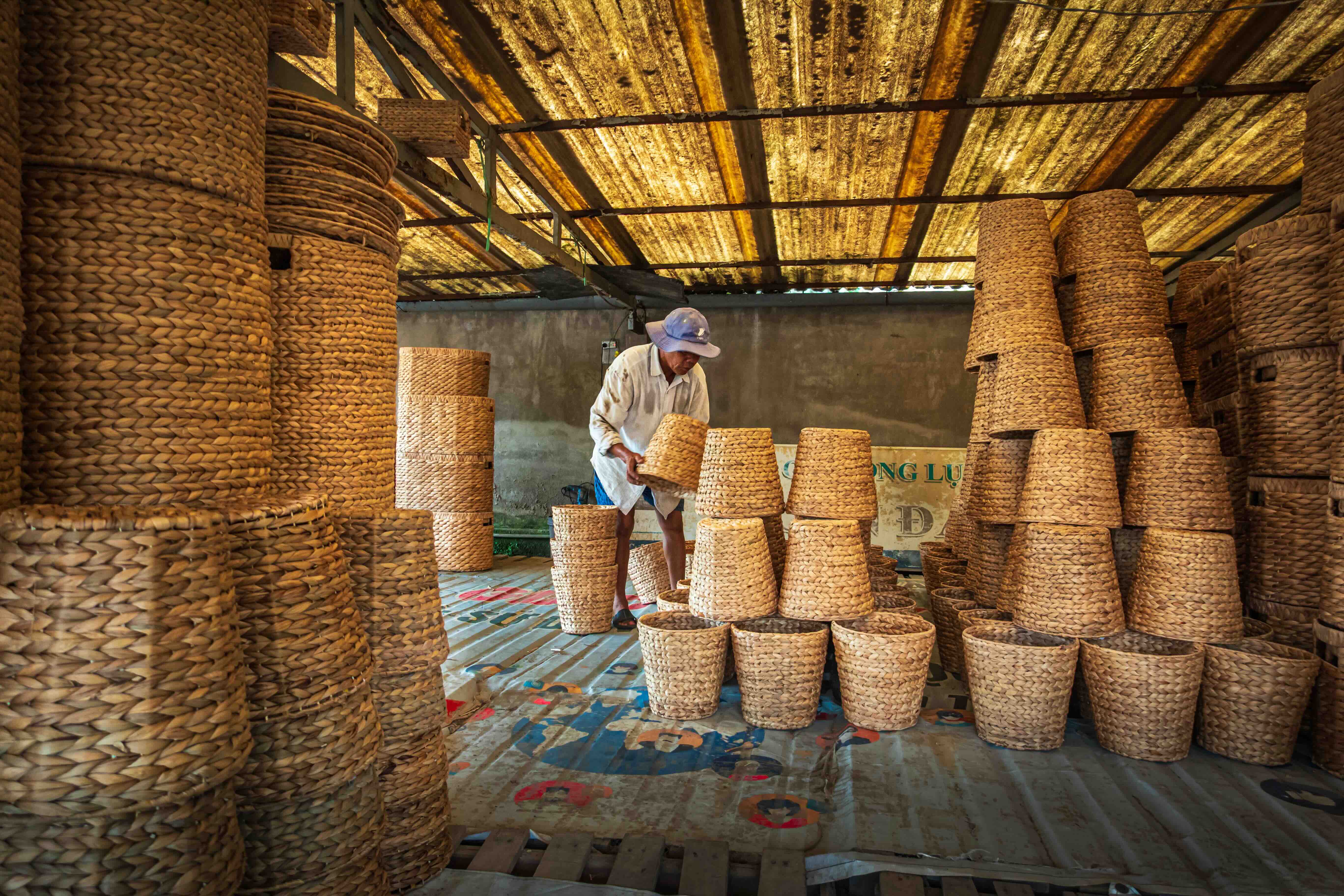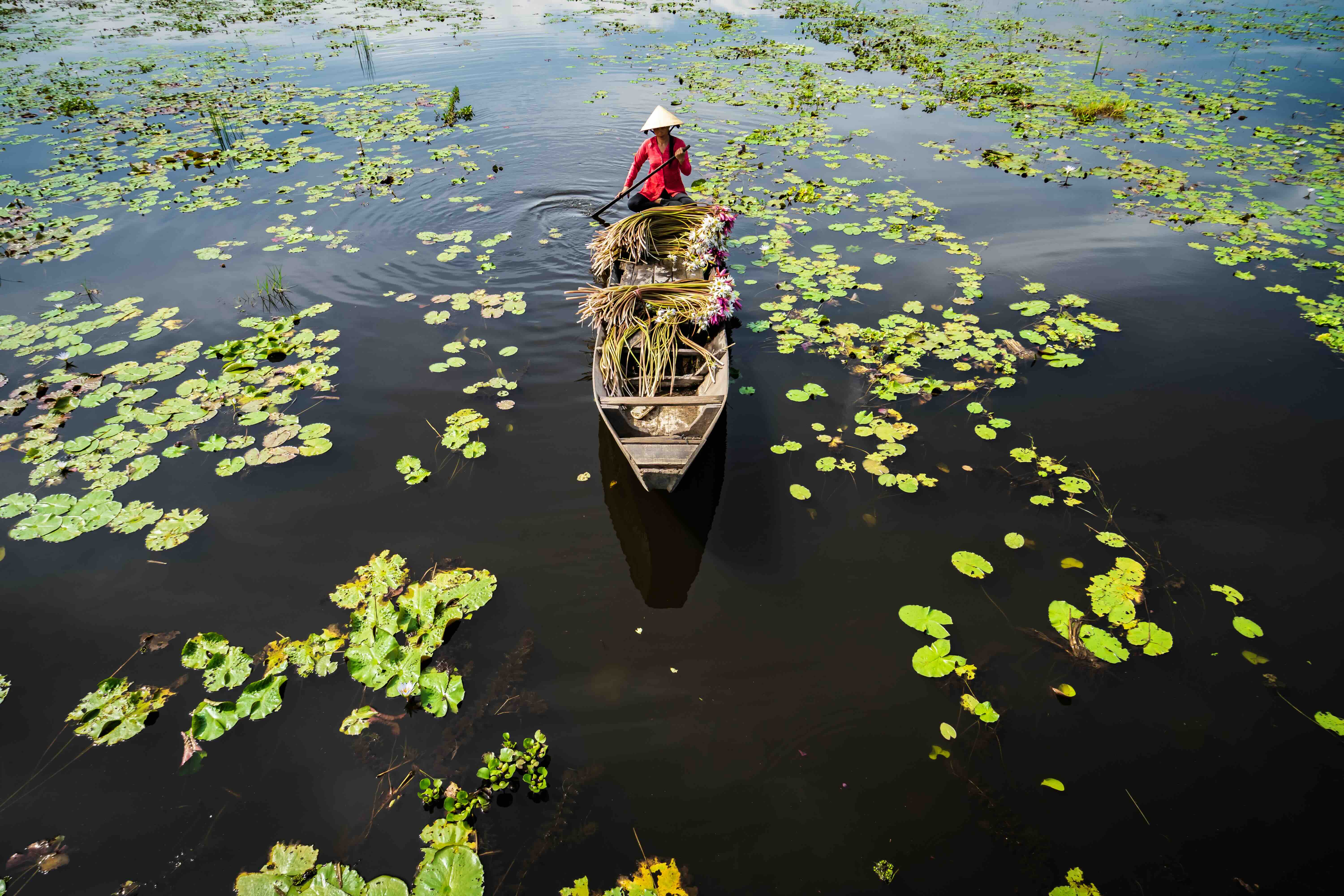Story: Phuong Nguyen
Photos: Thu Phan
Long An – now part of Tay Ninh Province – was once the only locality in the southwestern Mekong Delta without a branch of the Mekong flowing through it. Nature, however, compensated by giving this land two other important rivers: the Vam Co Dong and the Vam Co Tay. Both have shaped the region’s culture and gentle way of life, but the Vam Co Tay stands out for its diverse ecosystems, poetic scenery, and quintessentially southern river-life experiences. Anyone wishing to trade the hectic city for clean country air should explore the banks of the Vam Co Tay.

Vam Co Tay and the Plain of Reeds ecosystem
Rising in Prey Veng, Cambodia, the Vam Co Tay winds through Tay Ninh before reaching the sea via Can Giuoc. Although it does not run directly into the Plain of Reeds (Dong Thap Muoi), it is vital for irrigation and nurtures the rich habitats of Tram Chim National Park and the Lang Sen Wetland Reserve.
With its unique course, a boat trip down the river rewards travelers with sublime riverbank vistas. In the dry season, its waters are crystal green; in the rains, they turn a cloudy gold. Nipa palms form cool emerald walls, broken only by endless paddies where egrets wheel across the fields of ripening rice. During the floods, the river carries nutrient-rich silt and shoals of fish into the region’s villages. In the dry months, it brings fresh water and flushes acid from the surrounding farmland.
Here, life reflects the classic rhythms of the Mekong Delta: casting nets for fish, gathering water-hyacinths to dry for handicrafts, and, in idle hours, playing don ca tai tu – the region’s chamber music. Over a cup of fiery rice wine, the clack of the song lan (castanets) rhythm box sets the beat, and anyone may “drop” a sweet, lingering vong co verse. Simply listening leaves a gentle ache in the heart.

A proud history
Blessed by nature, the Vam Co Tay has also witnessed many of the nation’s proudest moments. During the Nguyen dynasty, when the river was named the Hung Hoa, it was a key channel for moving supplies. It later lived through two resistance wars against the French and the Americans, seeing countless Vietnamese fall so their homeland could be reborn. The river flows through pages of history, both glorious and heartrending.
In casual conversations, local elders share uncanny legends, none more intriguing than the spiritual tale of Co Son Tu – or “Noi Pagoda”. This pagoda still sits in quiet contemplation beside the Vam Co Tay, shaded by centuries-old trees. Legend says it began as nothing more than a mound rising above the floodplain. Each flood season left the surrounding land under a vast lake, yet this spot was never submerged, so village children herded their buffaloes and played there. They shaped little clay figurines, and, curiously, when the figures were tossed into the water, they refused to sink. Villagers read this sign as a blessing from higher spirits, retrieved the figurines, and built a humble shrine. The changing seasons brought gentle rains and fair winds, and, little by little, labor and devotion raised Noi Pagoda.

A late-afternoon cup of tea beside the Vam Co Tay River feels simple and unpretentious, yet meaningful. Slanting sunlight slips through thick leaves, scattering crystal sparks across the water, then fades into the shadows as dusk falls. We slowly head home, contented. The gentle river continues through this kind-hearted land, carrying countless memories. We will return in another season, eager for new experiences and the fresh joy of each new journey.










